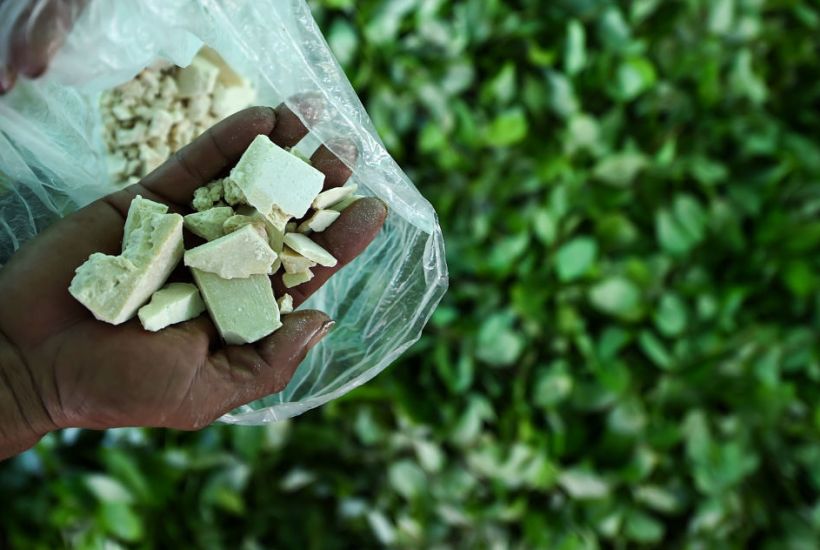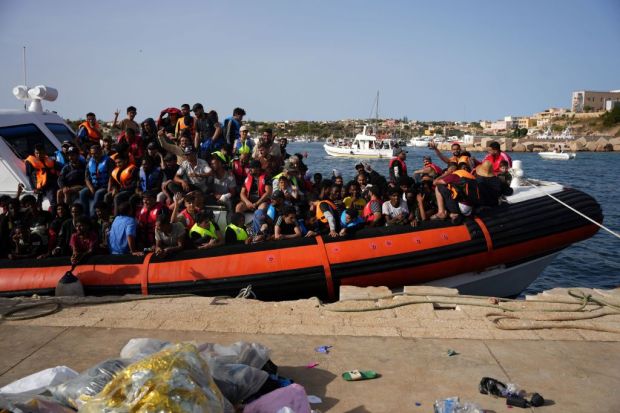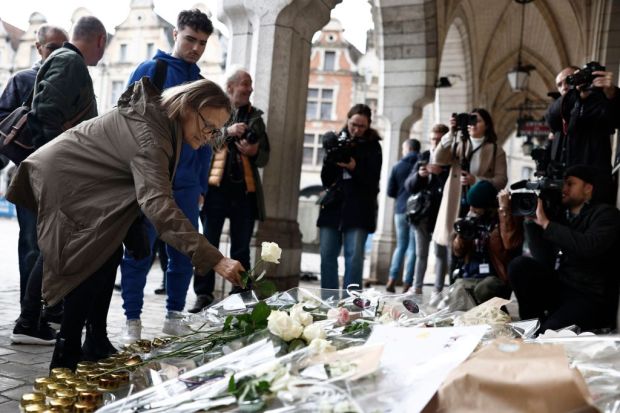In May this year 87,000 asylum applications were lodged with the European Union Agency for Asylum (EUAA). This was a 24 per cent increase on the number of claims made in May 2022.
Syrians, Afghans, Ivorians and Guineans were heavily represented among those making claims, but there was also a remarkable number of South Americans. Over 7,000 Venezuelans asylum seekers arrived in Europe this May, along with 2,500 Peruvians and 6,900 Colombians. In the case of Colombians, this is a 90 per cent increase on 2022. Most filed their asylum claims in Spain, and according to the EUAA, nearly all were first-time applicants.
Colombia has been beset by conflict for decades, but in newly-elected left-wing president Gustavo Petro they have a leader working hard to restore peace and prosperity. According to the CIA Factbook, the country ‘maintains relatively strong and independent democratic institutions characterised by peaceful, transparent elections and the protection of civil liberties.’
During the years of guerrilla war with groups such as FARC, hundreds of thousands of Colombians fled to Ecuador, Venezuela and Panama. A further 280,000 were granted permanent residency in the USA between 2002 and 2012. But why are Colombians now claiming asylum in Europe in significant numbers?
Perhaps it’s just a coincidence that there has been significant upturn in South American asylum seekers at the same time that Colombian and Mexican drug cartels are expanding their business operations in Europe.
In July I attended a dinner in Catania where on my right was a high-ranking member of the Sicilian Carabinieri. It was an enlightening evening; the Sicilian mafia is still around, my neighbour explained, but the real power today is in southern Italy.
According to Vanda Felbab-Brown, of the Brookings Institution in Washington DC, the Mexicans and the Colombians have ‘developed wholesale supply relationships with Italian mafia groups, especially the Calabria-originating Ndrangheta whose workforce is believed to have some 30,000 and whose budget is estimated in the tens of billions annually.’
Cocaine production in Colombia, Peru and Bolivia has boomed in the last decade, and so has its importation into Europe. A report in 2021 by the Global Initiative Against Transnational Organised Crime said that for the South American cartels it makes better business sense to traffic their produce to Europe and not the USA because ‘prices are significantly higher and the risks of interdiction, extradition and seizure of assets significantly lower.’ A kilogram of cocaine fetches $60,000 in western Europe, double what it is worth in the States.
Furthermore, the cartels can use Europe as a base from which to export the cocaine into the Middle East and Asia, both burgeoning markets.
The challenge for the cartels is how to get the drugs into Europe. In 2019 the Italian police pulled off a major coup when they infiltrated a plot by the Mexican Sinaloa Cartel to establish a trafficking base in Catania. The Sicilian city was chosen because of its port and its small international airport.
It was a superb law enforcement operation – codenamed Halcon – which not only netted some major criminals but also unearthed crucial intelligence about how the South Americans operate. One such disclosure concerned the Venezuelan military, which allegedly had turned a blind eye to dozens of light aircraft that each week trafficked thousands of kilograms of cocaine from Venezuela to Mexico
Drugs are still being smuggled into Europe by air, as well as on container ships into ports such as Le Havre, Antwerp and Rotterdam. My dining companion in the Sicilian Carabinieri said that significant quantities also arrive on remote stretches of the Calabrian coastline.
The two most industrious cartels are Mexican, Sinaloa and CJNG (Cartel Jalisco Nueva Generación), and increasingly they are smuggling in unfinished produce, coca base, and then processing it into cocaine here. According to Vanda Felbab-Brown, this is because ‘by using European processing facilities… Mexican and Colombian cooks, partnering up with European chemists, have been able to produce some of the highest potency cocaine.’
It’s not just cooks who are coming to Europe from Colombia. So are prostitutes and pimps. Police in Spain and France have in recent years dismantled several networks in which women are brought to Europe to work in the sex industry.
Most alarming are the sicarios (hitmen) who come to kill for their Mexican masters. It is, speculated Felbab-Brown in 2022, only a matter of time before Europe begins to experience a surge in drug-related violence.
It’s happening in France. On Monday evening Marseille experienced its forty-second drug war killing of the year, ten more than the number slain in the whole of 2022.
In July the French authorities seized 242 kilos of cocaine in a coordinated operation in Marseille and the Oise, north of Paris. Those arrested were French and Colombians, who according to a police source were ‘implicated in the importation of significant quantities of cocaine from South America via French Guiana’.
There are two other likely ramifications of the South Americans move into Europe; first, they will soon start producing fentanyl and other synthetic opioids, which have wreaked such havoc in the USA. Second, they will use their vast wealth to buy people of influence. That is already underway.
In the French Channel port of Le Havre, ten tonnes of cocaine from South America were seized in 2021 – a 164 per cent increase on the previous year. This was made possible by the help of French dockers, several of whom have been jailed for corruption, unable to resist the riches offered by the cartels.
In return for helping them move a container full of cocaine, the cartels pay a docker as much as €75,000. ‘Some dockers do it for the money, but most are threatened or pressured into it,’ claims lawyer Valerie Giard, who has acted for several indicted dockers. ‘The traffickers come up to them at the school gates or in a cafe and show them photos of their family,’ she explained. ‘They tell them that if they don’t do what they say, they’ll be trouble. Once they get them involved, they never get out.’
The same might be said of asylum seekers arriving in Europe. Once they are here, they never leave. Look at the Albanian mafia, who, as I wrote last year, began moving their heroin and prostitution businesses west at the start of this century. Business really began to boom in 2010 when the EU granted visa-free travel to Albanian citizens. Within a few years thousands of Albanians were seeking asylum in France, Germany and particularly Britain. There were 439 asylum claims in the UK from Albanians in 2011, which rose to 15,925 in 2022. Most claims have been successful. During this period the Albanian mafia has taken control of the UK’s cocaine market, working closely with the Colombian cartels. Only the stupendously gullible believe the two events aren’t linked.
Likewise, one would have to be breathtakingly naïve to imagine that every one of the thousands of South Americans lodging asylum applications in the EU is law-abiding.
Last year Dan O’Mahoney, Clandestine Channel Threat Commander, warned the Home Affairs Select Committee that while some Albanian asylum seekers were legitimate, others were ‘gaming the system’ to get into Britain. ‘Whatever sort of criminality you can think of – the most serious sort – there are Albanian criminal gangs dominating in those markets, whether it is drug smuggling, human trafficking, guns or prostitution,’ said O’Mahoney.
Now it is South Americans who are gaming the system and the consequences are likely to be just as grim.
Got something to add? Join the discussion and comment below.
Get 10 issues for just $10
Subscribe to The Spectator Australia today for the next 10 magazine issues, plus full online access, for just $10.





















Comments
Don't miss out
Join the conversation with other Spectator Australia readers. Subscribe to leave a comment.
SUBSCRIBEAlready a subscriber? Log in